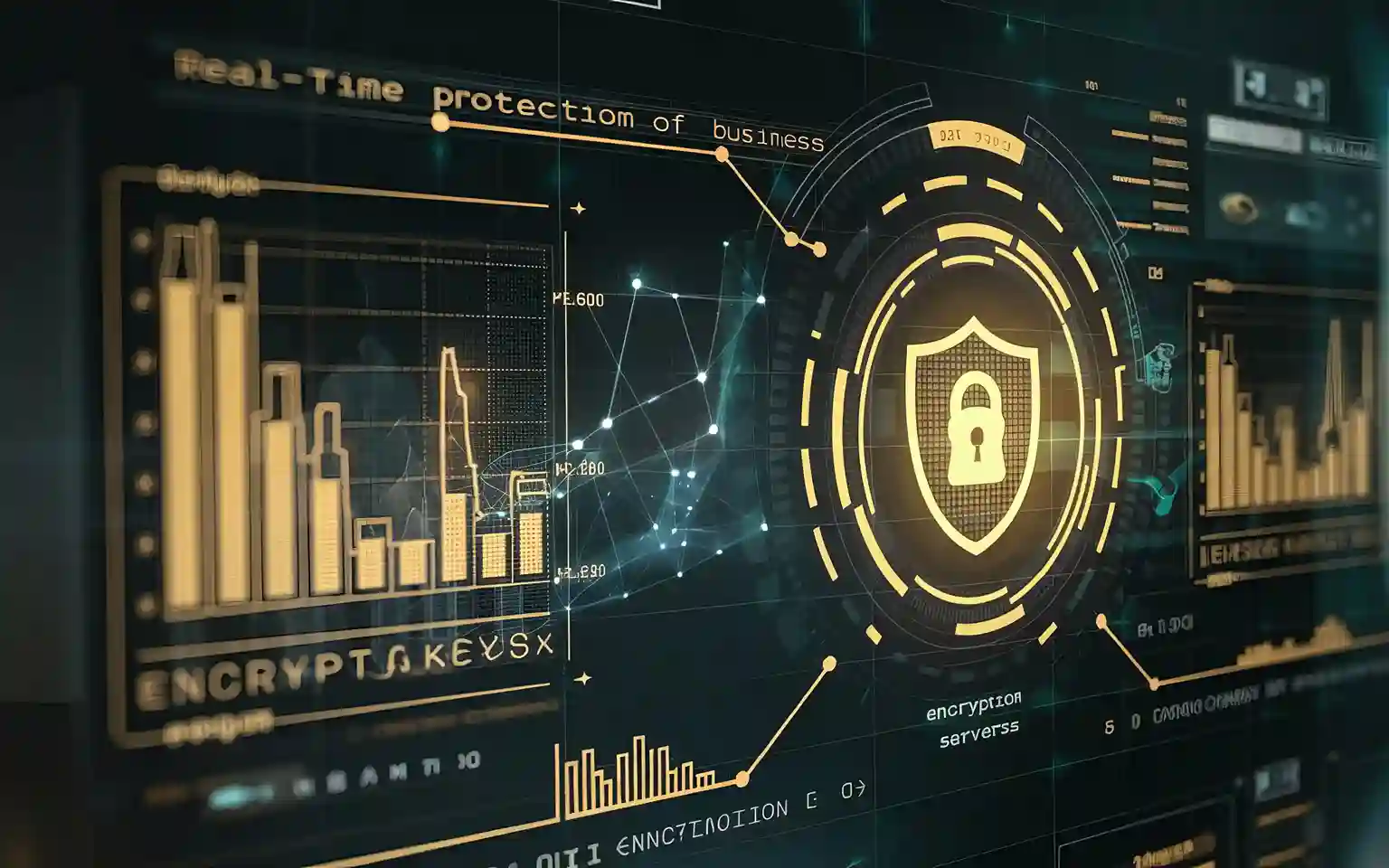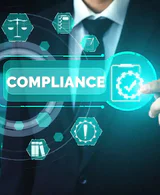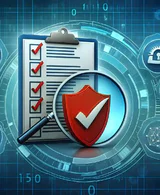2025 SMB Cyber Security Statistics

2025 SMB Cyber Security Statistics
In 2025, managing a small or medium business (SMB) makes one thing clear: cyber security has moved from being just a choice to an important requirement. It’s a key tool for succeeding in business. From customer data to financial systems, almost every aspect of your operations depends on technology. As your business becomes more connected, the potential risks also rise.
Rather than focusing on uncertain alerts regarding “hackers” hiding in the background, let’s look into the statistics. Actual, concrete data that highlight the risks facing SMBs this year, and the importance of prioritizing cyber security in your business strategy.
Breach Frequency: More Common Than You Think
Cyber incidents aren’t exclusive to the large company only. In reality, small and medium-sized businesses (SMBs) are becoming the most popular target. According to industry reports:
- 43% of cyber attacks target small and medium businesses.
- This year, approximately one in three small and medium-sized businesses will experience a cyber incident.
- For several businesses, it’s not about “if,” but rather “when.”
Here’s the shocking truth: approximately 60% of small and medium-sized businesses that suffer a major breach of data close down the business within just six months. That’s not describing the truth about the consequences of unsecured cyber threats.
What makes SMBs stand out? Attackers are aware that smaller businesses typically have limited resources, less strict policies, and more vulnerabilities through human interaction compared to larger companies.
New Threats on the Horizon
2025 marks an important turning point in the evolution of cyber threats that businesses must face. Cybercriminals are increasingly showing greater leadership, creativity, and innovation in their tactics.
AI-powered attacks
Cyber criminals are increasingly using artificial intelligence to execute more convincing and broad attacks. With the rise of advanced phishing emails customized to individuals and cloned voices deceiving employees into making financial transfers, the use of AI is making scams increasingly difficult to detect and faster to spread out. Reports show a significant increase in phishing attempts enhanced by AI technology.
Deepfakes
Deepfake technology generates realistic-looking videos and audio, enabling criminals to impersonate executives or trusted individuals convincingly. These convincing fakes are being used to approve forged transactions or obtain sensitive data, with a significant increase in cases planned in 2025.
Ransomware-as-a-Service (RaaS)
Cyber crime has become more simple to get involved in with Ransomware-as-a-Service, allowing criminals to easily rent packaged attack tools online. This model has put ransomware as the most growing threat, with ransom demands often exceeding into the millions. Small and medium-sized businesses continue to be prime targets, as they are seen as more vulnerable to force for payments.
Insider risks
Not every threat come from outside; employees can also be a source of risk, whether intentionally or unintentionally. Unintentional data leaks, improper use of personal devices, or unhappy employees with system access can all result in serious breaches, and recent studies indicate that over 30% of incidents are linked to insiders.
The combination of these emerging threats shows that cyber crime in 2025 is quicker, smarter, and more personal than ever before, making proactive defense not just a choice, but a must for every business.
The Entry Points: Where Attacks Begin
Learning about the cause of attacks is important for prevention, and the numbers related to these entry points reveal a fascinating story. Phishing emails account for more than 80% of initial breaches, highlighting that the human element remains one of the most vulnerable aspects of cyber security. Weak passwords present a significant challenge, as 61% of incidents can be linked to easily guessable or reused credentials. Neglected software and outdated systems account for 40% of breaches, putting businesses at risk of attacks that could have been avoided through consistent updates. One of the most serious problems today is the increase in insider threats, which can be either intentional or unintentional. This trend highlights the urgent need for improved internal controls and increased awareness.
It’s not always the complicated technologically advanced crimes you can imagine from movies. Sometimes it’s a distracted employee clicking on a questionable link or ignoring an update that provides cyber criminals with the opportunity to gain access to your systems.
The Cost of an Attack
Let’s discuss finances. A cyber breach goes beyond having an IT issue; it’s a financial crisis waiting to happen.
- The average cost of a data breach for an SMB is around AUD $4.5 million.
- Even minor incident—such as a phishing scam—can lead to serious financial consequences, including tens of thousands in lost revenue, fines, and recovery costs.
- Ransomware payouts are on the rise, leading numerous businesses to provide them with money that represent months of revenue simply to regain their financial stability.
The impact continues beyond the first attack. Downtime, the loss of client trust, regulatory penalties, and the amount of time staff dedicate to fixing issues all contribute to the total expenses. The journey to recovery can extend over several months, and in the current competitive business, those months could damage your reputation.
How Long Does Recovery Take?
Every hour matters when an attack happens. But rather of becoming quicker, the recovery period for SMBs is getting longer.
- Typically, businesses require around 73 days to manage and prevent a breach.
- Returning to normal activities may require a period of six months or longer for complete recovery.
- Productivity suffers significantly, with downtime frequently reaching an average of 21 days, during which business operations face serious interruptions.
Picture a situation where sales come to a dead end for three weeks, client projects are postponed, and your team is left with no tasks. For numerous small and medium-sized businesses, this level of downtime may seriously interfere with annual goals and even threaten their long-term survival.
Numbers Into Action: What You Can Do
The good news? The statistics reveal the scale of cyber threats nowadays, but they also point out practical solutions that can lead to significant improvements.
Train your people
Phishing continues to be the primary gateway for attacks, highlighting the importance of staff training as one of the easiest and most powerful defenses. Being aware can significantly help in preventing harmful emails from causing any trouble.
Update your systems
Unpatched software can be compared to keeping the front door wide open. Consistently refreshing systems and applications helps to seal off multiple weaknesses that cyber criminals use to gain access.
Invest in multi-factor authentication (MFA)
Many breaches occur due to weak or stolen passwords, but implementing MFA introduces an additional layer of security. Even if your password falls into the wrong hands, the additional verification ensures your data remains secure.
Back up data securely
Ransomware becomes less intimidating when you have the confidence that your data is securely backed up and protected. Consistent and reliable backups empower you to restore your data without having to bear of paying a ransom.
Develop an incident response plan
Every business must be prepared with a clear plan of action in the case of an attack. A straightforward response plan allows for immediate action, minimises damage, and accelerates the return to normal activities.
Where ICTechnology Fits In
Cyber threats are relentless—having a partner who transforms insight into effective protection is crucial. That’s where ICTechnology steps in. We don’t just point out the risks; we encourage you to take action with tailored solutions crafted for small and medium businesses.
We offer an overall viewpoint that goes beyond just technology. We begin with an in-depth review to identify the areas where your business may be most at risk. We then create complete security strategies that link people, processes, and systems—addressing all aspects from email filtering and multi-factor authentication to data backups and disaster recovery planning.
We understand that security is not just a one-time initiative; it’s a continuous journey. That’s why ICTechnology team offer ongoing monitoring, support, and training to ensure your team stays your most effective line of defence. From protecting against ransomware to reducing insider threats and staying one step ahead of AI-driven risks, our mission is to ensure your business is secure today and ready for the threats of tomorrow.
Turning Numbers Into Strength
The data is clear—cyber threats are growing quickly, and small to medium-sized businesses continue to be key targets. The financial and operational impact can be serious, yet those same data also highlight the proactive measures companies can implement to protect their future. Recognising the urgency is the initial step; implementing an optimised strategy is what truly sets your business apart. At ICTechnology, we go beyond being just a provider; we become a partner who truly understands the data and daily difficulties you encounter.
In 2025, prioritising security is essential; it cannot be ignored. With attacks growing in volume, cost, and complexity, the businesses that will succeed are those that take proactive measures today. At ICTechnology, we hold an opinion that small and medium-sized businesses should enjoy the same level of security as bigger companies. With the appropriate strategies, tools, and training, achieving this is entirely possible. Transform those statistics into proactive measures that safeguard your business.
Interested in a Quote and Consultation? Reach out to:
[email protected]
Need Cyber Security? Please reach out!
[email protected]
Any other enquiries?
Fill out our Contact Form here.
References
Australian Cyber Security Centre. (2023). Annual cyber threat report 2022–23. Commonwealth of Australia. https://www.cyber.gov.au/annual-cyber-threat-report
IBM. (2024). Cost of a data breach report 2024. IBM Security. https://www.ibm.com/reports/data-breach
Ponemon Institute. (2024). Global data breach cost survey. Ponemon Research.
Verizon. (2024). Data breach investigations report 2024. Verizon Enterprise.





